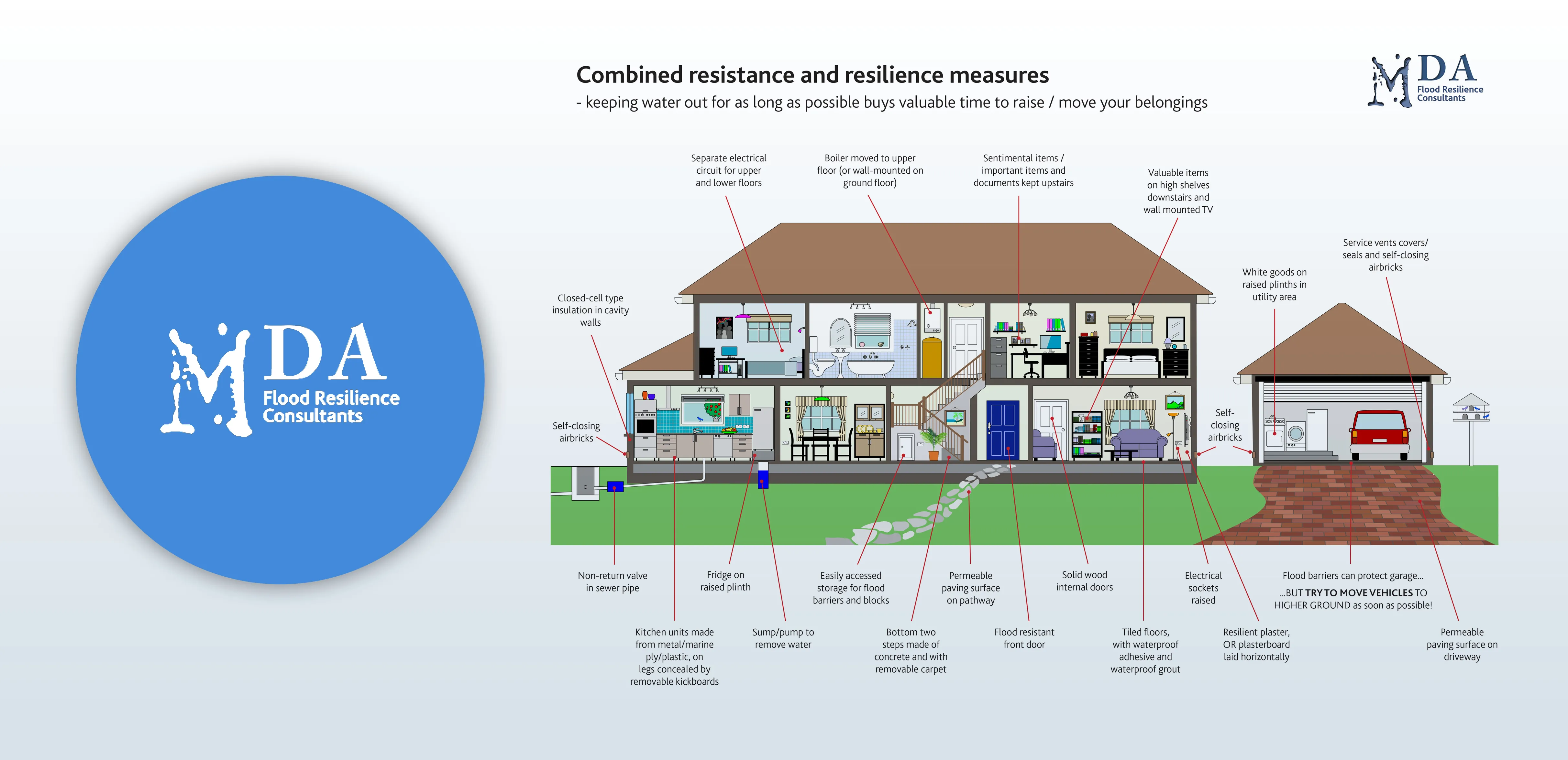Flooding is devastating for those affected; the risk of injury or even death, the emotional impact and stress of a frightening experience and of losing possessions, having to move out of your home and the long journey of clean-up and repair. The average cost of a claim in 2021 for repairing an insured property and replacing its contents after flooding was £20,094 (according to the Association of British Insurers ((ABI)) and the damage to peoples’ health and wellbeing is usually long lasting.
For property owners of rented homes, the impacts of flooding can be severe: loss of rent, cost and organisation of repairs, insurance implications, and administration of the care and arrangements needed for tenants.
What is the current and future flood risk in Scotland?
The Scottish Environment Protection Agency (SEPA) estimates that 284,000 homes, businesses and services are currently at risk of flooding in Scotland, equating to roughly one in eleven homes and one in seven businesses and services.
As climate change continues to intensify, all types of flooding are predicted to get worse; increasingly wet winters, more intense rainfall in summer and rising sea levels will increase the risk of flooding to Scotland’s communities.
How to check what your flood risk is
SEPA publishes flood maps that highlight an area’s current and future risk of flooding from rivers, the sea and surface water. It is important to note that the maps do not tell you the exact flood risk at a specific property, but they give a good indication of the flood risk in the area that a property is located.
How to prepare if you are at flood risk
There are several steps you can follow to help you prepare if your properties are at risk of flooding:
- Managers and tenants can sign up to SEPA’s Floodline service for free flood messages – this will notify you directly if the area you live, work or travel through is at risk of flooding and give you more time to prepare for expected flooding. When flooding is expected, you can view live flood updates on the SEPA website for the most up-to-date flooding information across the country.
- Check the Scottish Flood Forecast – a three-day forecast, providing you with the earliest available information about where and when flooding is expected.
- Make sure your building insurance covers the impact of flooding.
- Raise awareness among your tenants, and encourage them to prepare an emergency flood kit and a household flood plan, and to ensure they have contents insurance which covers loss due to flooding.
- Make sure that your organisation’s emergency plan includes a plan for how to respond to flooding.
- Consider investing in property flood resilient measures when doing any property renovations (see below for more information).
- If several of your properties are at risk of flooding, consider engaging a consultant engineering company that specialises in flood risk assessment to investigate the level of risk to the properties in more detail and to make recommendations on any other steps you could take to prepare.
Things you can do to make your housing stock more resilient to flooding
If your property is at risk of flooding, there are things you can do to reduce the likelihood of water entering the property or to reduce the impact if it does – property flood resilience (PFR) measures which are made up of:
- resistance measures keep water out of the property – such as flood barriers and airbrick covers
- recoverability measures reduce the impact of flooding when it gets into a property – such as steel or wood kitchen units (that can dry out) or concrete floors.
This combination of measures can reduce the impact of flooding in terms of financial cost to both the tenants and property owner (and to the insurance sector), the emotional and disruption cost (to the property owner and tenants), and carbon cost (to wider society).
Resistance measures can generally be retrofitted at any time, and many installers and manufacturers exist. However, recoverability measures tend to be most cost effective during initial construction, renovation after flooding or during planned maintenance and upgrade of building stock. A CIRIA Code of Practice on PFR assessment, installation and maintenance has been published and adopted by the industry.
As housing associations develop maintenance and retrofit strategies, do consider incorporating property flood resilience measures into those plans – it may prevent both you and your tenants a great deal of disruption, heartache, and cost.
For further information:
Flooding | Scottish Environment Protection Agency (SEPA)
Scottish Flood Forum – SFF
Twitter:
Scottish Environment Protection Agency (SEPA) (@ScottishEPA)
Scottish Flood Forum (@scotfloodforum)
